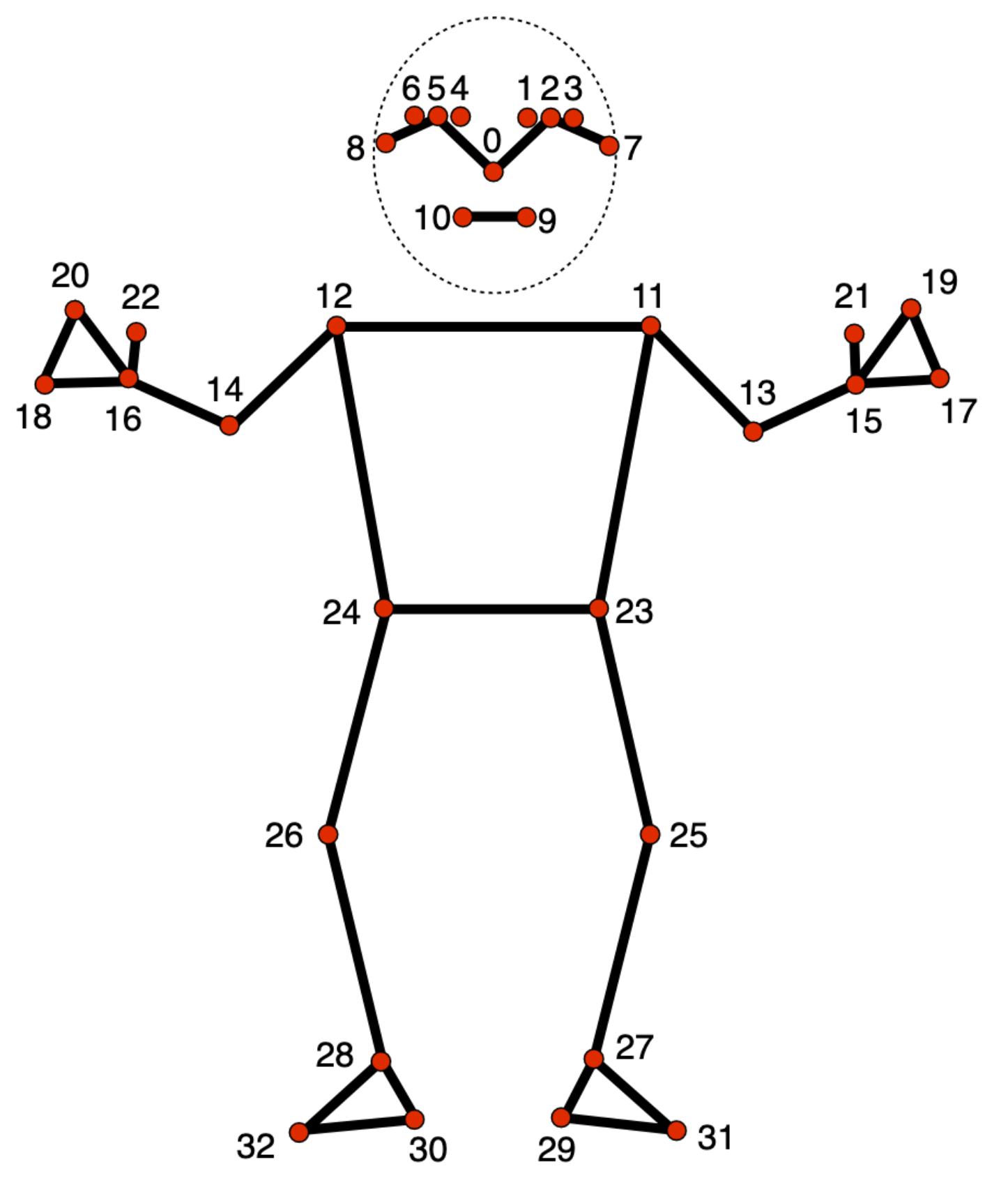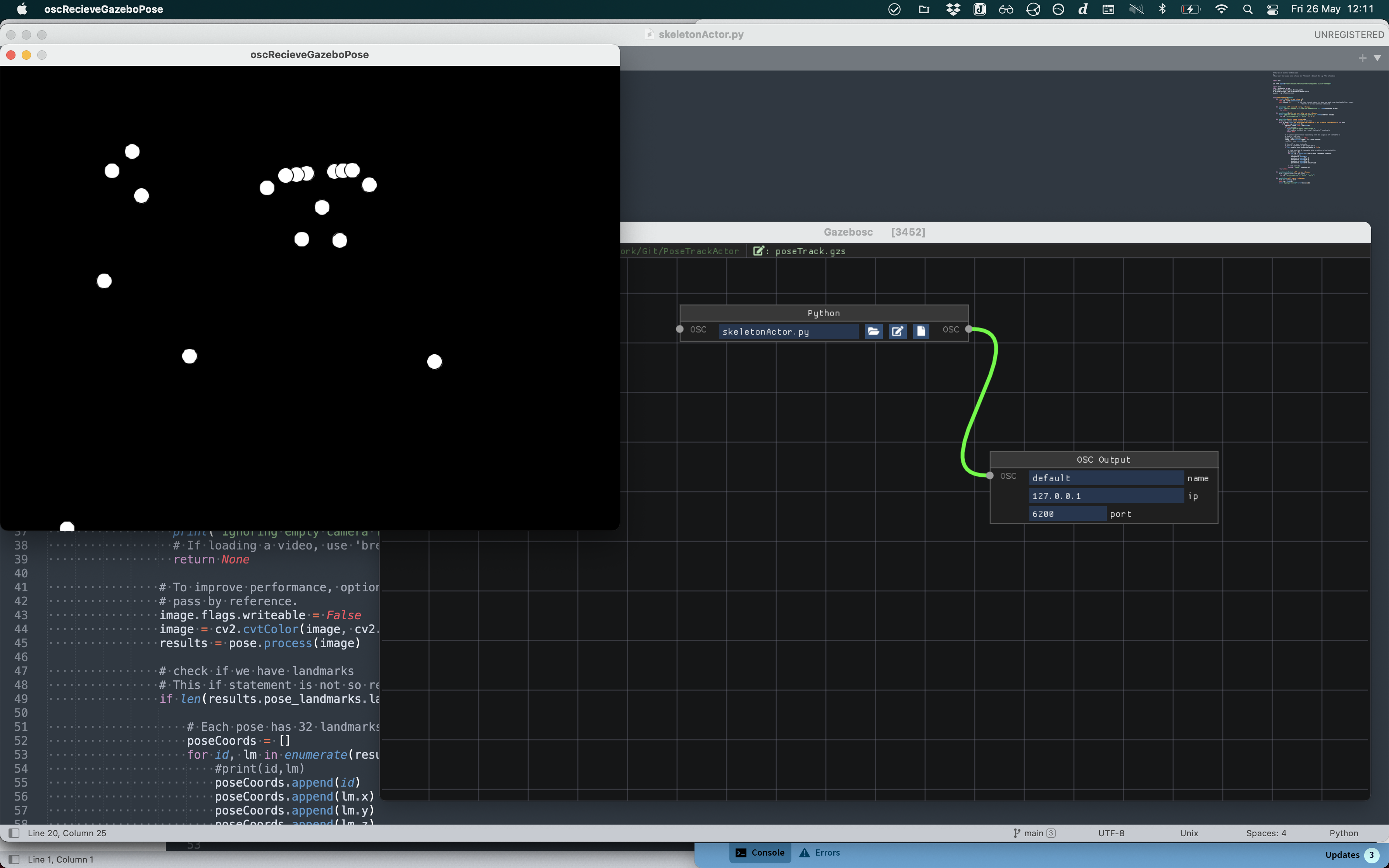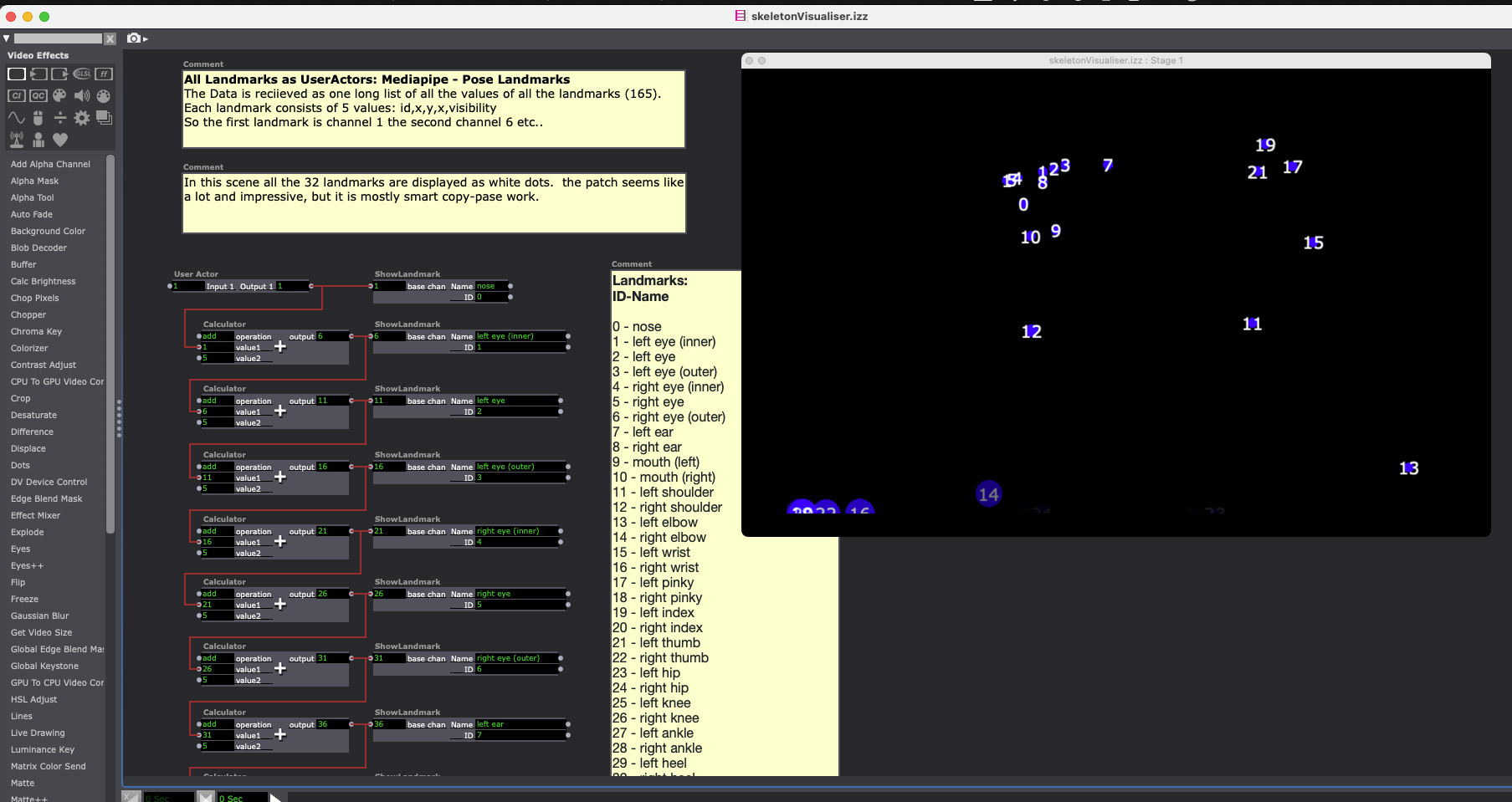This repo contains Gazebosc Python actors you can run from Gazebosc to use Mediapipe functionlaity such as:
- pose tracking
- face tracking
This actor uses the mediapipe library So you need to refrence to where this library is installed on your system. We advise to use a Python virtual environment for this. See for more information about Python virtual environment here
To install Gazebo on your computer go here: https://pong.hku.nl/~buildbot/gazebosc/
Click on "Last modified" to sort the files on date and download the last version of Gazebo for your computer Windows/OSX/Linux.
- Switch to branch mediapip0.10.9
- Download this repo by clicking on "<> Code" and then "Download Zip"
- Unzip the zip
To use the mediapipe actors you first need to install a Python Virtual Environment where you then install mediapipe.
Open a terminal and use the Python included with Gazebo to make a python virtual environment in the directory you downloaded. This means you first need the path to the Python excecutable inside of Gazebo.
Following is a example for OSX:
/Volumes/gazebosc_OSX_10.15_fd8b/gazebosc.app/Contents/Resources/python/bin/python3.8 -m venv venv
Then activate the python virutal environment:
source venv/bin/activate
Then install all the requirements for the actors:
pip install -r requrements.txt
primer on Python venv here
- Open GazeboOsc
- From whithin GazeboOsc click "file" and then "load" and navigate to the folder you just downloaded and open "poseTrack.gzs"
- This will open the stage with the python actor and it wil start running the actor
- You might need to repeat loading the stage to get the actor working.
The OSC message send out by the skeletonActor starts with the label "/pose". The message has a length of 165 values and consists of 32 landmarks. For eacht landmark thes message structure is "hdddd" meaning one value of type long and four values of type double. These represent the ID of the landmark, the x position, the y position, the z position and the visibility.
So the format is:
h, d, d, d, d
id, x, y, z, visibility
0 - nose
1 - left eye (inner)
2 - left eye
3 - left eye (outer)
4 - right eye (inner)
5 - right eye
6 - right eye (outer)
7 - left ear
8 - right ear
9 - mouth (left)
10 - mouth (right)
11 - left shoulder
12 - right shoulder
13 - left elbow
14 - right elbow
15 - left wrist
16 - right wrist
17 - left pinky
18 - right pinky
19 - left index
20 - right index
21 - left thumb
22 - right thumb
23 - left hip
24 - right hip
25 - left knee
26 - right knee
27 - left ankle
28 - right ankle
29 - left heel
30 - right heel
31 - left foot index
32 - right foot index
Landmark image
Source: link
In the processing directory you can find oscRecieveGazeboPose which parses the OSC data send out by the pyhton actor to visualise the data.
In the isadora directory you can find skeletonVisualiser.izz which parses the OSC data send out by the pyhton actor to visualise the data. The file is subdivided in different scenes creaed as a tutorial to showcase how you can use the data.


